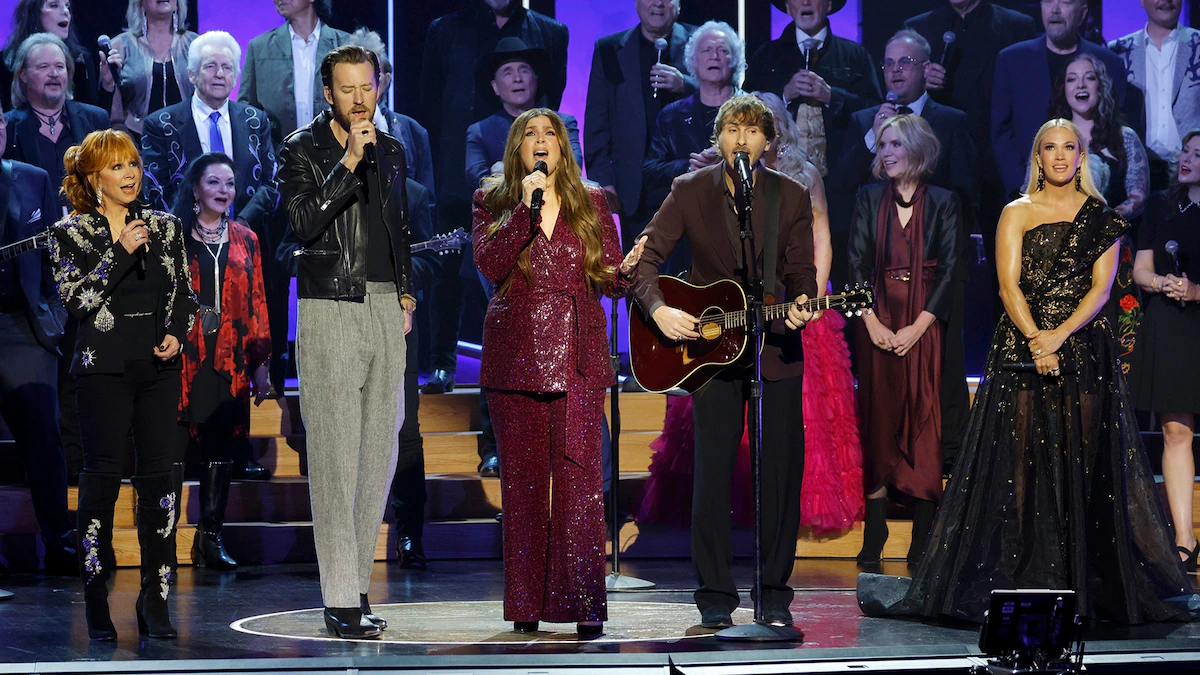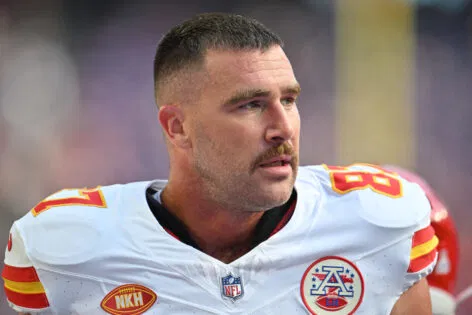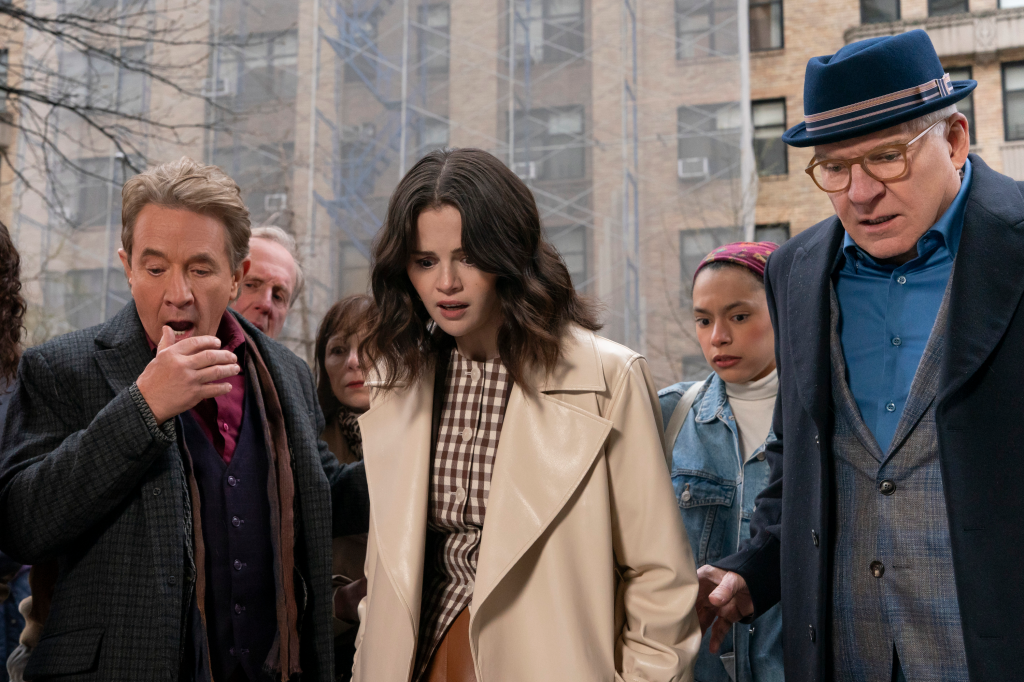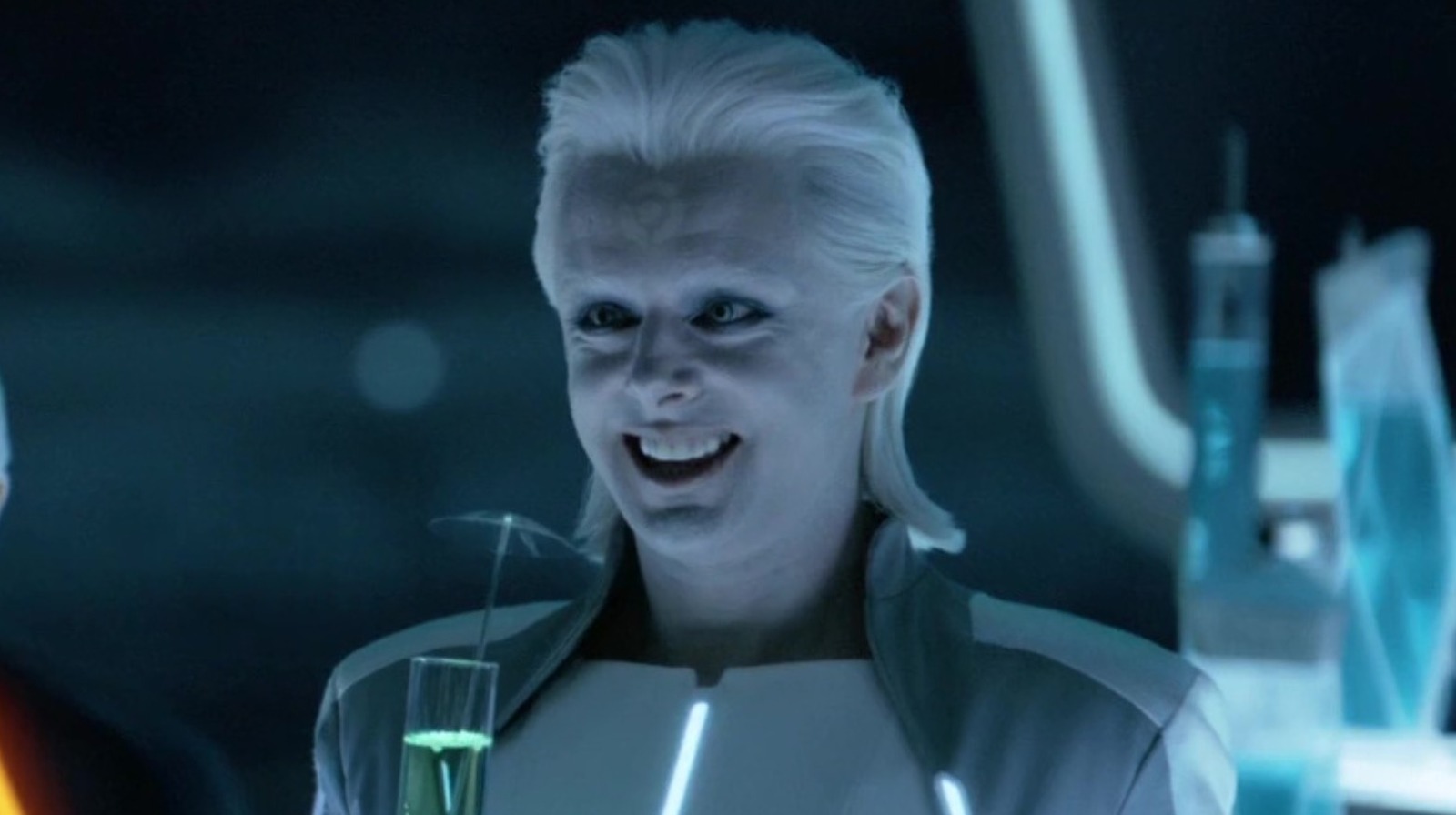Copyright National Geographic

Hours before the Grand Ole Opry launched its Holy Saturday broadcast earlier this year, dozens of country music fans had already gathered in the pollen-covered courtyard outside. A high-school orchestra played nearby as families, double dates, exhausted tourists, cowgirl-booted bachelorette parties, the full Nashville ecosystem, all waited on stone benches as the oldest radio show in the world buzzed to life inside the big barn-styled building nearby. The audience was there to see generations of country music stars like Ashley McBryde, Jon Pardi, and Ricky Skaggs play sets alongside a typically varied lineup including a young debut performer, the Riders in the Sky western vocal group, and, since it was Saturday, the Opry Square Dancers. Some of those pilgrims had traveled far, like the German family in matching white cowboy hats who were part of a post-show backstage tour group the night before. That tour is less than $50, but there are plenty of people around the world for whom earthly money is a small price to walk in the footsteps of legends like George Jones, Loretta Lynn, Garth Brooks, and other musicians who have played the Opry over its 100-year history. When the program now called the Grand Ole Opry debuted on November 28, 1925, the sole performer was a 77-year-old fiddler from the Tennessee hills playing into a primitive microphone with his niece accompanying him on the piano. “Country music,” the genre, didn’t even exist; the performance would have been considered hillbilly or old-time, or just fiddle tunes. In the century since, this homespun style has constantly evolved and expanded, and the Opry has grown alongside it. In 1974, on the cusp of its 50th anniversary and at the dawn of a new age in country music’s mainstream appeal, the show left its longtime home at Nashville’s famed Ryman Auditorium downtown, an intimate venue built in the late 19th century, and was replanted on newly built grounds northwest of the city. It has since grown into the anchor of an enormous shopping and hospitality complex, the Gaylord Opryland Convention Center, owned by the show’s current corporate owner, Ryman Entertainment Properties. That 100-year journey from raw folk art to the jewel of a corporate real estate portfolio is a mirror image of country music over the same span of time. The show now stands as a dual monument to country’s commercial ascendance and to its stylistic depth and breadth: a weekly show that features square dancing, cowboy songs, and spirituals alongside today’s hitmakers, performed next door to a Dave & Buster’s. On that Easter Saturday in April, I stood stage right as the tech crew tested the 40-foot, animated LED display that is typically set to resemble a red barn like the iconic Opry stage set in its defining mid-century years. The lighting designers can toggle between a menu of animated backgrounds to match the typical country song settings, too: church stained glass, a whiskey bar, a highway. The house band’s five guitarists (three electric and two acoustic) arrived and plugged in while saying their hellos to a pianist, drummer, fiddler, pedal steel player, and a quartet of background singers. These are black-belt studio musicians, the cream of Music Row. People whose names aren’t familiar to many listeners but who have played on hundreds, if not thousands, of recordings in an industry town nicknamed Music City. They took their places on the black risers that spanned the 90-foot-wide stage, behind instruments that were surrounded by state-of-the-art microphones and soundproofing equipment. Limited-Edition Classic Collection Inspired by Earth’s highest peak and deepest point, get limited-edition holiday gifts and a National Geographic subscription. After tinkering with their stage rigs, the band members walked through heavy double doors to the backstage rehearsal area, where Christian singer Steven Curtis Chapman was waiting to teach them a song that he had written just for the night’s show. They sat in a large circle with the other band members under a three-story ceiling, near the venue’s artist’s entrance. Through those glass doors you could see a well-lit outdoor garden that includes a stone fountain once belonging to Minnie Pearl, the beloved mamaw comedy act who spent 1940 to 1991 as unofficial Opry matriarch and mascot. The musicians’ circle included Vince Gill, who began his eminent career as a guitarist for hire before becoming one of the most successful solo country stars of the 1980s and ’90s. A mainstay at the Opry whenever his busy tour schedule allows (he’s also been a member of the Eagles since 2017), Gill was just another laughing Nashville lifer learning chords and practicing his harmonies with an acoustic guitar on his lap and his left foot resting on his right knee. You’d never know he’s sold more than 20 million albums and has 22 Grammys Awards. “It’s guys like him who keep this place going,” says Mark Thomas, the Opry’s Head Production Manager. Thomas’s considerable back-of-house staff handles all the technical aspects of the show from sound to lighting and broadcasting, and they archive every single show in professional-quality audio and video—two terabytes per night, an astonishing data management project in addition to its cultural worth. From this uniquely omniscient view, Thomas has seen Gill in this building hundreds of times. As we watched the musicians work out their arrangement, he tells me, “Vince is very invested. He gives us a lot of his time.” Gill might not be a chart presence today like he once was, but he has chosen to prioritize the Grand Ole Opry and its mission for decades. In 1993, he was offered invitation-only “membership,” one of country music’s highest honors, the ultimate blessing by the most venerable organization in an industry built on tradition. The list of 200-odd all-time Opry members overlaps significantly with the inductees at the Country Music Hall of Fame nine miles away, including icons Hank Williams and Ray Price, Patsy Cline, Dolly Parton, Loretta Lynn, and Willie Nelson. Chapman, who led the musicians’ circle and taught his nostalgic Opry-themed song from behind a keyboard, was that night the newest Opry member in the world, having gotten the invitation only months prior. He is also one of the first Christian-market artists to be brought into the fold, proof like everything inside these walls that the Opry persists because it is cannily designed to maintain relevance to a wide audience, no matter how much the country winds shift. I left the immediate backstage area and walked into the deeper office hallways to find Dan Rogers, the Opry’s executive producer, who grew up listening to the show in a Midwest small town and now has his dream job. He sees himself as a guardian, something between a museum curator, concert promoter, and foundation director. The Opry exists “to showcase the past, present, and future of country music,” he explains. “We’re simultaneously working on today’s show and where we want to be in five, 10, 100 years.” (What Dolly Parton wants us to know about the Smoky Mountains.) From "hillbilly vaudeville" to country music empire Some people might find it ironic that the nation’s premier stage for songs about Daddy’s bible and Mama’s love now sits, in the fall, within shouting distance of a Spirit Halloween. But the show was always foremost a commercial venture, not an artistic one. The call letters for the Nashville station that originated the Opry, WSM, stand for “We Shield Millions,” the motto of its corporate parent, National Life and Accident Insurance Company. Before the words Grand Ole Opry were ever spoken, the show was designed to sell. At the time, “barn dance” radio shows were a hot ticket, featuring live performances of hillbilly music and vocal acts. National Barn Dance, out of Chicago, was maybe the most popular of all, so WSM hired away its announcer, George D. Hay, and let him run free. In November 1925, Hay entered a station whose programming ran towards light classical and amateur string groups; this was almost two years before the modern “big bang” of country music when the Carter Family and Jimmie Rodgers recorded sessions in Bristol, Virginia, inaugurating the genre’s commercial era. But near the end of the month, Hay hosted fiddler Uncle Jimmy Thompson, who claimed to have a repertoire of 1,000 mountain tunes. Uncle Jimmy fiddled, sang, and drank while his niece played piano, surrounded by the WSM studio’s luxurious red drapes. The audience response was immediate and overwhelming. Calls poured in and the fiddler returned. By New Year’s, The Tennessean reported that “[b]ecause of this recent revival in the popularity of the old familiar tunes, WSM has arranged to have an hour or two every Saturday night.” A son of small-town Indiana, Hay knew exactly what kind of unserved audience existed out in the American hinterlands. “The Opry is built to entertain that 85 percent of our population sometimes vulgarly referred to as ‘the masses,’” he once explained. “The whole idea behind it is one of friendliness and not of smartness.” Conveniently, too, it opened National Life and Accident to a vast listenership that largely lacked insurance. He titled it Barn Dance, creatively. Hay had a keen sense for talent scouting and was a shrewd marketer, unafraid to pander. As the show expanded to include a live audience, he often made his urbane talent dress like farm hands. Hay recruited city dance hall musicians like Dr. Bate & His Augmented Orchestra and renamed them the Possum Hunters or the Dixie Clodhoppers. The phrase “grand ole opry” was first uttered on air in 1927, to draw a distinction between its cornpone contents and the typical middle-class WSM offerings. Rural music was still taboo in polite society. Roy Acuff, one of the genre’s earliest stars, who wrote countless country standards including “Tennessee Waltz” said that the Opry was his first lifeline. “When I got started,” he once explained, “no city of any size would accept hillbilly performers, so we played schoolhouses out in the woods and small theaters in small towns.” By contrast, “you didn't get on the Opry for singing a song or having a hit number. They didn't ask you if you ever recorded. They didn't care. You had to be a showman. The only way you could get on was to have something to show and prove it.” The presence of the Opry was a major reason why Nashville grew into a music industry rival to New York and Los Angeles in the postwar era, and why country music slowly developed a firm grip on the popular psyche across the decades. In 1943, the show took up residence at the Ryman Auditorium, a brick church around the corner from Nashville’s Lower Broadway, which soon became the city’s honky-tonk central. Country stars could escape to Lower Broad right from a backstage door and go jump onstage at the bars. Ernest Tubb’s Record Shop opened nearby in 1947, owned by the wiry, gravel-voiced Opry member who epitomized honky-tonk music. It became a longstanding post-show destination for his peers as well. When the Grand Ole Opry left for its own venue in 1974, a section of wood was brought in from the Ryman stage and installed right at the center of the new one in tribute. The so-called Mother Church was ailing and small at the time: it needed major repairs and held fewer than 3,000 people, when the show had become a commercial and technological behemoth, selling out every performance and broadcasting across the South. The first Grand Ole Opry broadcast from its new home was attended by President Richard Nixon, who even played “God Bless America” on piano while leading a sing-along. Rather than steps from Lower Broad Street, it was now neighbors with the Opryland theme park, which ran seasonally from 1972 to 1997 and included rollercoasters, a log flume, and musical performances. “It was much more down-home at the Ryman, in the olden times,” laughs singer Pam Tillis, a member since 2000. She would know. The daughter of famed songwriter and solo star Mel Tillis, she made her Opry debut before she was 10, joining him to sing the folk song “Tom Dooley.” As a teenager she worked at a drink cart in the amusement park. “My father and his friends, they were show folk,” Tillis explains to me by phone. "The stars in that day, they had huge personalities and loud clothes because they had none of the technology and bells and whistles. It was hillbilly vaudeville.” The steady commercialization isn’t the odd thing about the Opry; Americans excel at blowing up and bleeding dry our most modest entertainments. Instead, the Opry is an outlier in our culture for retaining so much of that old-fashioned character of its earliest years. It’s not strange to hear insurance company ads on the radio, or to hear Shaboozey, Ringo Starr, and Post Malone, all of whom made high-profile Opry debuts in 2025. But it’s rare indeed to hear four-part harmony cowboy tunes like the kind performed by the retirement-aged members of Riders in the Sky, who were dressed in custom-stitched western wear for the occasion. “It’s so nice to have something that’s endured,” says Tillis. Keeping country music's history alive “This place embraces the entirety of country music,” is how Gill explains it to me, gesturing around to the space where he’s spent incalculable hours. “There’s more to it than just my era of hitmaking. There’s even an element of reverence for bluegrass.” We spoke in the artists’ backstage area, a loop of dressing rooms surrounding a common area filled with brown leather seating and soft carpet. Everywhere you look, the Opry is designed to simultaneously burnish country music’s history and make listeners feel right at home within it, like Tammy Wynette might materialize and serve you biscuits in full makeup. A visit to this room, surrounded by reminders of the rarified air you breathe, also includes a taste of the famous Opry lemonade. It’s been made for generations by the same employee, whose name is Diana though the tag on her shirt simply says “Lemonade.” Underneath the collection of framed black and white photos from across the decades, a faint water line ran eye-level along the walls like a memento mori, a remnant of the devastating 2010 Nashville flood that endangered the entire building and Opry enterprise. You don’t make it to a century without surviving catastrophes. Gill made his Opry debut as an 18-year-old backing musician in a bluegrass group. Later, in the late ’80s, he was invited back as a solo star, and welcomed among a community of elderly stars he’d grown up idolizing, like Roy Acuff who was once known as the “King of Country Music.” “What I noticed was the camaraderie. They went fishing together,” Gill tells me. “No one got paid a lot of money, but I saw from that community that after your career isn’t hot anymore, they’ll still support you. They never bailed on the people they supported.” After Acuff became a widower in 1981, the Opry offered him a house on the grounds, so he’d never be far from his closest friends. The house is now a tourist stop and a fully functional auxiliary studio for WSM, who can broadcast intimate artist performances live on air. As he nears 70, Gill embraces the elder statesman role. He’s known to show up unannounced, though he appears on the official bill a lot. Among his cohort of Bush- and Clinton-era hitmakers, Gill stands nearly alone as an ambassador for the Opry, which he clearly feels is a kind of giving back. When he shows up, he uses Acuff’s old dressing room, and like the great one, he always leaves the door open for visitors. One of his fellow performers that night was Arkansas-born singer-songwriter Ashley McBryde, who rivals him for commitment to the Opry among younger artists. She played her fiery set in a sleeveless jumpsuit and sleeve tattoos, singing with a twangy fury that had inspired more than a few groups of girls in the audience to wear her t-shirts that evening. McBryde made her Opry debut in 2017 and has since won a handful of awards, including a Grammy. She became a member in 2022, and she appears often, and clearly relishing its significance. McBryde reminisced between songs about growing up as a strict preacher’s kid while socializing with her small town’s “band nerds and theater nerds and video game nerds, the kind of people who got teased and picked on.” Those shirt-wearing girls and everyone else exploded with applause, as they did when McBryde asked for the spotlight to shine on the sign language interpreter she requested for the broadcast. “People want to paint this place as a closed shop, but it’s not the conservative flagship it’s known to be,” Gill says. “It’s inclusive.” (Beyoncé’s Cowboy Carter tour reminds us that Black artists are at the roots of country music.) The Grand Ole Opry at 100 Inclusivity is a process for the Opry. The head-scratching list of non-members includes era-defining talents like Buck Owens, Merle Haggard, George Strait, Tim McGraw, Faith Hill, Miranda Lambert, and infamously Elvis Presley, who didn’t pass his audition in the 1950s. There have been no invitations extended to eclectic artists like Lucinda Williams, Rosanne Cash, k.d. lang, or Waylon Jennings. Part of it is the Opry’s Nashville bias, since many of the artists above lived elsewhere during an era when members were contracted to make a certain number of annual appearances. Part of it is stylistic conservatism about what constitutes “real” country; we’re talking about an institution that didn’t even allow drums onstage until the mid-1970s. And then of course there’s other, more striking forms of conservatism. There have been a handful of Latino performers in Opry history, including young Música Mexicana star Carin León’s debut in 2024, but none have received invitations, not even country and Tejano singer Freddie Fender. Henry Cho, a comedian who received his invitation in 2023, is the only Asian American to have the honor in a century. And in 2025, Darius Rucker is the only living Black member of the Grand Ole Opry, and only the third in its entire history following harmonica player DeFord Bailey, who was unceremoniously fired in 1941, and singer Charley Pride, who was only invited in 1993, long after his huge commercial peak in the early ’70s. Following a 2022 performance by Morgan Wallen less than a year after he was caught on tape using America’s most infamous racial slur, a country fan named Holly G. founded the Black Opry, a Nashville-based community and touring revue meant to call attention to the genre’s long history of Black contributors (Wallen apologized, describing his words as "ignorant and wrong.") But change is visible, nevertheless. Just a few weeks after Easter, Gill was behind the microphone at Opryland once again, forever smiling in a sport coat with an acoustic guitar. This time he was performing with his old friend Steve Earle, who epitomized raw and rowdy country-rock when he debuted in the 1980s and has since had a long and celebrated career playing bluegrass, protest music, and tributes to rough-hewn mentors like Townes Van Zandt. In front of the Opry crowd, Gill offered Earle a special leather OPRY100 guitar strap, then informed him that, oh by the way, only members are allowed to have them. Earle, a long-bearded ex-con who wears leather and sings with a grainy drawl, immediately burst into tears. “I’m the oldest newest member,” Earle brags to me later. (He turned 70 in January.) “I didn’t think that would happen. I tried to play in ’86 and it didn’t happen. There were people there who thought what I was doing was not country music.” Earle grew up in an era that saw no meaningful differences between rock, pop, folk, and country, and he mixes them all instinctively. For years he has single-parented his teenage autistic son while living in New York City, keeping his touring day to the summertime when the boy is in Nashville with his mom. Heading into the final act of a rewarding but tough career with narrow profit margins, Earle only became more appreciative of what the Opry stands for, and how it could help him. When Gill made the announcement, Earle immediately flashed back to Saturday evenings spent listening to the Opry with his grandfather as a child, and the two visits he made to the Ryman to see it live, ages seven and 11. “It all came full circle,” he says, explaining his tears. “I’m never going to be in the Country or Rock and Roll Hall of Fame. I was nominated 16 times before I won a Grammy.” But Opry membership is a different, deeper kind of honor. “I’m really proud that I’m being inducted in the 100th year,” Earle says. “I respect my elders. Tradition is important to me.”



